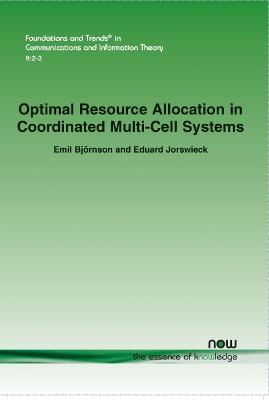The use of multiple antennas at base stations is a key component in the design of cellular communication systems that can meet high capacity demands. The downlink transmission from base stations to users is particularly limiting, because many applications primarily create downlink traffic. The user devices should also be inexpensive and energy-efficient, thus only simple reception algorithms are feasible. Under ideal conditions, the gain of employing multiple antennas is well-recognized: the data throughput increases linearly with the number of transmit antennas if the spatial dimension is utilized to serve many users in parallel.
The practical performance of multi-cell systems is however limited by a variety of non-idealities, such as insufficient channel knowledge, high computational complexity, heterogeneous user conditions, limited backhaul capacity, transceiver impairments, and the constrained level of coordination between base stations.
Optimal Resource Allocation in Coordinated Multi-Cell Systems presents in a tutorial manner a general framework for modeling different multi-cell scenarios, including clustered joint transmission, coordinated beamforming, interference channels, cognitive radio, and spectrum sharing between operators. The framework enables joint analysis and insights that are both scenario independent and dependent. A comprehensive characterization of resource allocation problem categories is also given, along with the corresponding numerical signal processing algorithms. This provides a pragmatic foundation for resource allocation where the system utility metric can be selected to achieve practical feasibility. The tutorial also derives and parameterizes the structure of the optimal resource allocation, in terms of beamforming vectors and optimal operating points.
Optimal Resource Allocation in Coordinated Multi-Cell Systems provides a solid grounding and understanding for optimization of practical multi-cell systems and will be of interest to all researchers and engineers working on the practical design of such systems. The Matlab code is available online for some of the examples and algorithms in this tutorial.
- ISBN13 9781601986382
- Publish Date 28 January 2013
- Publish Status Active
- Publish Country US
- Imprint now publishers Inc
- Format Paperback
- Pages 282
- Language English
- URL https://nowpublishers.com/article/Details/CIT-069
